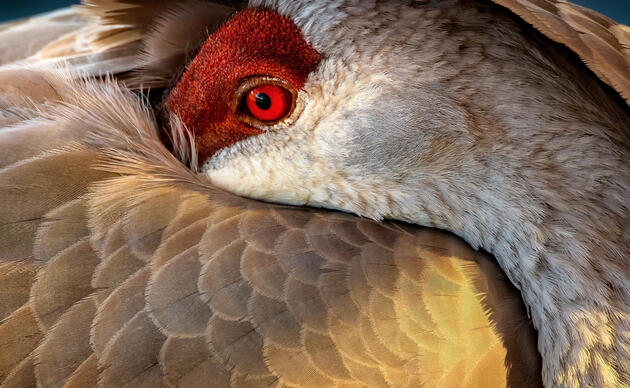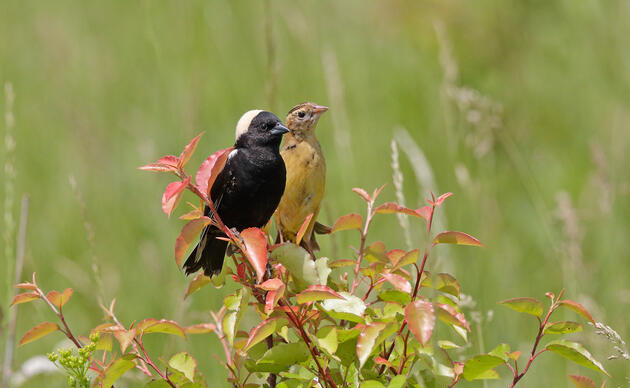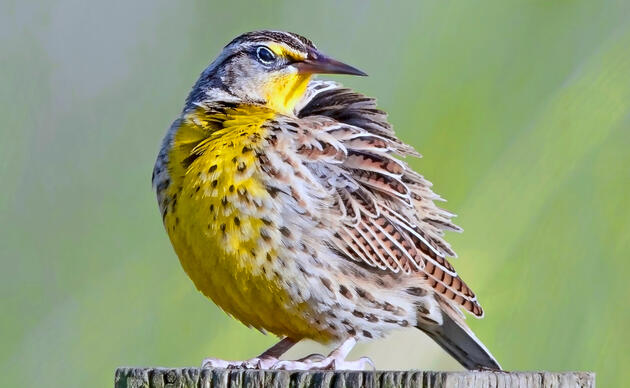Prairies are characterized by their inherent disorder. Great Plains continental climates are unforgiving for all but the hardiest of species. Winters bring extreme cold and frozen soils, while summers can reach to triple digits, scorching the exposed soil. Rain and snowfall vary widely year to year, making normal precipitation levels seem abnormal. One of the few constants of the prairie is wind. In these unobstructed landscapes, winds can persist and exceed 20 miles per hour for weeks at a time. Before European colonization, large herds of bison, and to a lesser extent elk, pronghorn, deer, and bighorn sheep roamed across the plains in search of water and forage or as part of annual migration patterns. These immense herds moved through the landscape grazing at extreme intensities. On an individual piece of ground these grazing events could last for a few hours or sometimes for months at a time. Frequent large fires also played a significant role in the prairie ecosystem, burning rapidly and unchecked across the vast unbroken plains. Fire returned in 3-15 year intervals, ignited by lightening or human activities. All fires are not alike and their influence on the prairies was dependent on scale, intensity, and seasonality. Vegetation of the prairies burned readily and needed to adapt to fire. Fire provoked seed production, root tillering, nutrient cycling, and created openings for young plants to sprout from the soil. Fires had the added benefit of attracting large herds of bison and other grazers, who sought out the tender and nutritious regrowth that sprouted following a burn. As a penance for their grazing, they brought with them nutrients and hoof impact that fed and stimulated the soil biology.
Numerous species of perennial and annual grasses, forbs, and shrubs emerged to adapt to these dynamic conditions. Deep rooted perennial grasses and their adventitious root systems made up the bulk of the great prairies, capitalizing on bursts of rainfall from intense infrequent rainfall events. Tap-rooted forbs and shrubs with roots exceeding 20 feet persisted during years of drought, gathering water and nutrients from deep in the soil profile. Other perennial grasses and forbs adapted to the intense and long-term grazing events by growing low enough to escape excessive defoliation and root loss.
Drought, grazing, fire, and various vectors of erosion created gaps in the blanket of grasses, leaving opportunity for numerous species of short-lived forbs and grasses to colonize and thrive in the deep prairie soils, protected from the extreme wind, rain, and sun. Some species thrived in the old heavy clay soils left behind by the receding of the ocean, and other species thrived in the young coarser soils to the east left behind from enormous glaciers or windblown sand and silt deposits. Warm season vegetation adapted to thrive during the heat of summer taking advantage of intense summer thunderstorms. Cool season species were well adapted to thrive in the moist soils left behind by snowmelt and spring and fall rains. The presence of both warm-season and cool-season plant communities provides resilience to the prairie and buffer against year-to-year variances in rainfall and temperature timing and extremes. In adapting to this myriad of variable climate soil and disturbance conditions, thousands of species evolved, and hundreds could be found on any given acre.
The prairies of the Great Plains illustrate nature’s remarkable ability to adapt and thrive amidst a land of disorder. Having weathered extreme temperatures, drought, and frequent fires, the prairies resilience is evident in the myriad of perennial and annual grasses, forbs, and shrubs that have evolved to survive. Fire playing a key role in this evolution, signifies that fire not only mimics history’s natural solutions, but the species diversity that blankets the Great Plains.
The prairie is much less vast owing to fragmentation from agricultural, urban, and energy development. Modern day prairies are also less diverse than their pre settlement counter parts. Much of this can be owed to homogenous management and invasive exotic grasses. The once varied and inconsistent disturbance regimes of the past have been replaced by simplified annual management. Beginning in the early 1900s fire has been suppressed in all but a few small regions of the US. Areas that once burned on average of every 5 years, have missed as many as 25-30 fire return intervals. The absence of fire on prairie landscapes has shifted communities from diverse native grassland vegetation to more a simplified and exotic grass and forb components and an increase in trees and shrubs. This loss of diversity and increased landscape fragmentation supports a smaller biomass of wildlife comprised of fewer species.
However, grasslands are remarkably resilient and fire, when applied to areas of native vegetation, still serves as an invaluable vector for reset and rejuvenation. Despite its long absence agencies and individuals are working to make controlled fire a more available option for land managers and producers.




